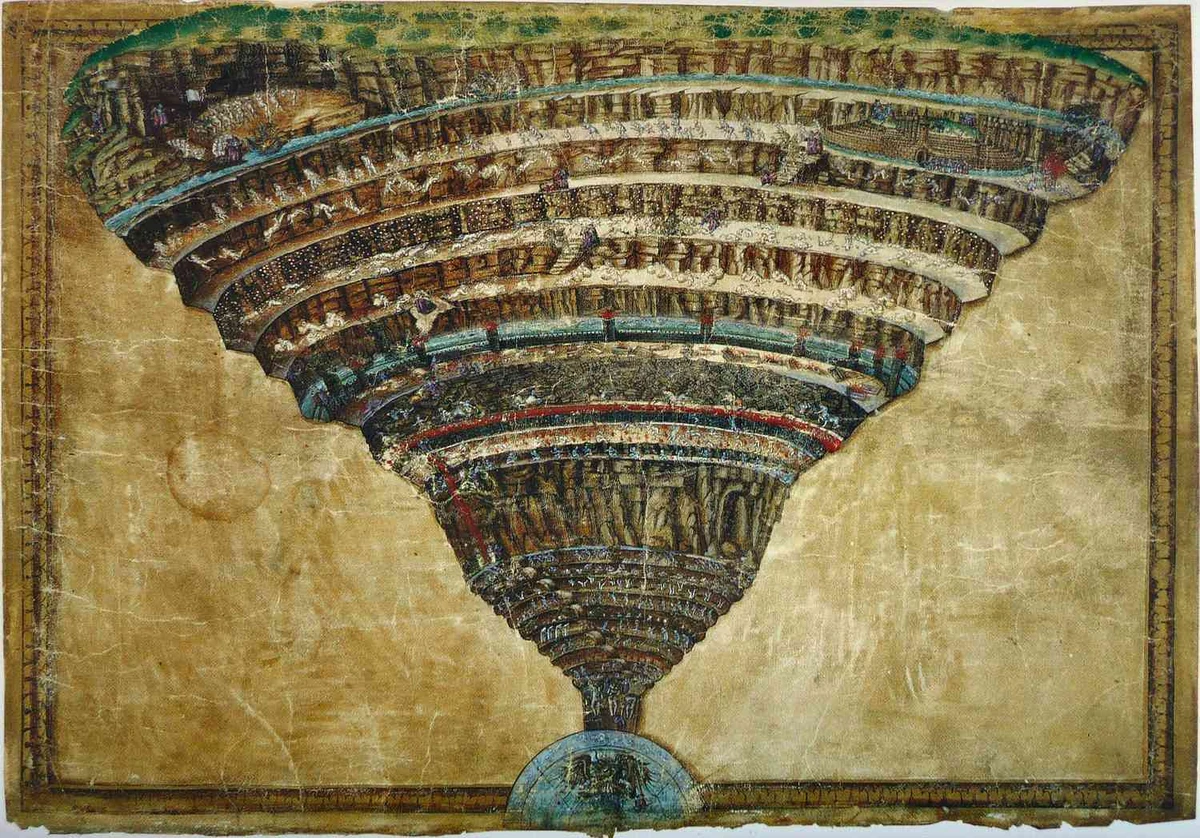organicjuicebardc.com – The concept of Hell has been a staple in religious and mythological narratives for centuries, serving as a place of punishment for the wicked and a warning for the living. Among these depictions, Dante Alighieri’s “Inferno,” the first part of his epic poem “The Divine Comedy,” offers one of the most detailed and influential visions of Hell. In this literary masterpiece, Hell is structured into nine circles, each reserved for different categories of sinners, descending into deeper levels of suffering and despair. This article delves into the exploration of these nine circles, uncovering the layers of Hell as imagined by Dante.
The First Circle: Limbo
The first circle, Limbo, is the outermost edge of Hell, reserved for the virtuous non-Christians and unbaptized pagans. Here, the atmosphere is not one of torment but of a profound sadness, as the inhabitants are aware of their exclusion from Heaven. Despite their noble lives, they find themselves in a state of eternal longing.
The Second Circle: Lust
In the second circle, the souls of those who were overcome by lust are violently tossed about by the winds of a never-ending storm. This punishment symbolizes the lack of control these individuals had over their desires during their lives, now mirrored in their eternal lack of rest.
The Third Circle: Gluttony
The third circle is dedicated to gluttons, who are forced to lie in a cold, putrid slush while being pelted by a ceaseless, foul rain. Cerberus, the three-headed dog, guards this circle, adding to the torment by mauling and devouring the souls.
The Fourth Circle: Greed
Greed, both hoarding and squandering, is punished in the fourth circle. Here, the avaricious and the prodigal are condemned to an eternal brawl, pushing weights at each other in a grotesque parody of their earthly fixation with material possessions.
The Fifth Circle: Wrath
The fifth circle, also known as the River Styx, is a dark and turbid waterscape where the wrathful and sullen are submerged. The wrathful fight on the surface, while the sullen lie beneath the water, glaring at the sky in eternal resentment.
The Sixth Circle: Heresy
Heresy is punished in the sixth circle, where heretics are trapped in flaming tombs, enduring the physical manifestation of the spiritual fire they kindled with their beliefs. This circle emphasizes the importance of orthodoxy and the dangers of straying from the established faith.
The Seventh Circle: Violence
The seventh circle is divided into three rings, each punishing different forms of violence: against neighbors, against self (suicide), and against God, nature, or art. The punishments range from being immersed in a river of boiling blood to being gnawed on by harpies, reflecting the brutality of their crimes.
The Eighth Circle: Fraud
Fraud, being a deliberate deception motivated by malice, is punished in the complex and multifaceted eighth circle. It is divided into ten bolge (ditches), each reserved for different types of fraud, from seducers and flatterers to thieves and corrupt politicians. The punishments here are often poetic, reflecting the nature of the sin committed.
The Ninth Circle: Treachery
The ninth and final circle, reserved for traitors, is a frozen lake called Cocytus. Here, the traitors are encased in ice, with their positions reflecting the severity of their betrayals. At the very center of Hell lies Satan, eternally gnawing on Judas, Brutus, and Cassius, the ultimate symbols of treachery.
Conclusion: The Lessons of Hell’s Layers
Dante’s “Inferno” provides a rich tapestry of moral and ethical lessons through its depiction of the nine circles of Hell. Each circle serves as a mirror to the human condition, reflecting the consequences of our actions and the importance of virtue. As we explore these layers, we are reminded of the complexities of morality and the eternal struggle between good and evil. The “Inferno” not only offers a chilling vision of the afterlife but also prompts us to reflect on our own lives and the legacy we wish to leave behind.
